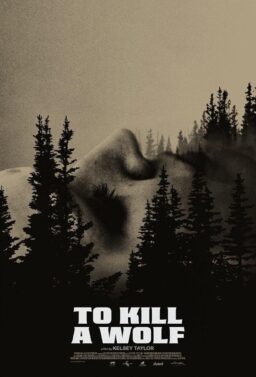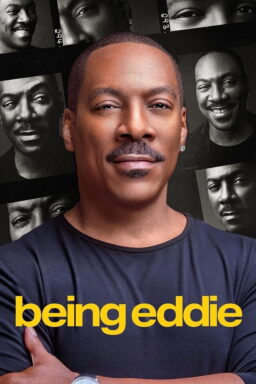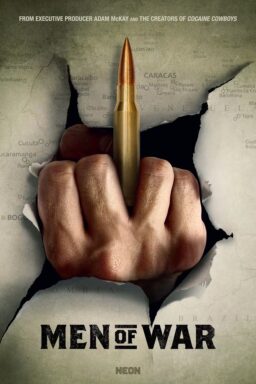Up in the 2400 block of Lincoln Ave., there is still a grocery and a bar and a butcher shop, and there is still the Biograph Theater, which is 40 years old this week.
Across the street there is another movie house built about the same time, the Crest, and it closed up about five years ago. The posters out in front still advertise its last program: Hemingway’s “The Killers” and Elvis Presley in “King Creole.”
This week, the workmen came and tore down some of the old marquee, and underneath there was a sign for a garage and gas station. But the garage already had been converted into the Crest Theater on the night when John Dillinger decided to go across the street to the Biograph instead.
That was the night of July 22, 1934, and the Biograph was playing “Manhattan Melodrama” with Clark Gable and William Powell. Dillinger, Public Enemy No. 1 at the age of 32, went to the movies with two lady friends. One was Mrs. Anna Sage, the “Woman in Red” who had already betrayed him to the FBI. After the movie
Dillinger walked out of the theater and a few steps down the street, past a bar advertising beer for 10 cents a stein. He was stopped by FBI agents, pulled his pistol, ran a few steps, and was shot dead at the entrance to an alley.
“Naturally we don’t have any idea what seat he sat in,” Jack Cooney said the other day. “Every once in a while a carload of tourists will pull up and want to look the place over. So we let them. When I’m feeling in a wicked mood, I’ll point out a seat near the exit door and say Dillinger sat there because he wanted to make a quick escape.”
Cooney pushed his hat back on his bead and chuckled. He is 75 years old and has been a showman in Chicago for 50 years. In the boom days of the 1920s, he and his brothers built and controlled some of the South Side’s plushest movie palaces: the Chatham, the Hamilton, the Capitol, the Stratford, the Paradise, the Avalon. But the Depression ended all that. The Cooney brothers lost their theaters into receivership, and the old Lubliner and Trinz circuit merged with Balaban and Katz, the only major Chicago theater chain to survive.
In the late 1930s, Jack Cooney began to pick up the pieces, managing theaters here and there in the Chicago neighborhoods and as far away as Gary and South Bend. For the last eight years, he has managed the Biograph.
Last Friday was a big day at the Biograph. There was a spray of flowers in the lobby, sent by the Seminary Restaurant at the corner of Lincoln and Fullerton, and a new rug in the lobby, and the marquee had been given a fresh coat of red and white paint and a new sign: “All-Girl Revue Live on Our Stage.”
“The strippers are something new,” Cooney said. “I don’t know how well we’ll do, but I guess it’s worth a try. We went along for several years with double features, kid shows on Saturdays, just kind of a
typical neighborhood theater policy. We didn’t get rich, but we got along. Then the big snowstorm last winter kind of knocked us out for a while, along with a lot of other people. We thought maybe business would pick up if we put in some strippers. Who knows?”
A curtain across half of Cooney’s office formed a makeshift dressing room for the girls, who were engaged at that moment in the first live show on the stage of the Biograph in 25 years. In the lobby an usher was sorting posters for the current double feature: “Girl on a Chain Gang” and “Shotgun Wedding.”
“They’re nice little pictures, not half as bad as you’d imagine,” Cooney said. “Of course these are what are known as exploitation pictures. You sell them on the basis of the title. But I’ve seen a lot worse.”
The girls came in wearing dressing gowns, and shooed Cooney out of his office. He grinned. “Got to use this office in shifts now,” he said. “Down on the South Side, we used to put on some real stage shows. I remember we had stars like Gilda Gray and Eva Tanguay at the Stratford. I suppose everybody’s forgotten Eva Tanguay. She was a stripper, but a real performer, you know what I mean? She had a little gimmick where she’d peek through the curtain. They called her the ‘I Don’t Care’ girl.”
“And then we had some of the really big stars. Gloria Swanson used to appear in our theaters. She’d come to town to promote her new movies, you know. She was the biggest star of those early years, except Valentino, of course. And we had Wallace Reed and Theda Bara for stage shows. And Clara Bow – they called her the ‘It’ Girl – appeared at the Avalon. Bob Hope worked as a comedian at the Stratford, down at 63rd and Halsted, for a few weeks in 1925. But we finally fired him. He didn’t go over too good, we thought at the time. Well, you live and learn.”
The strippers came out of the office, dressed in street clothes.
“Well, girls, it sounded like a real nice show,” Cooney said. “I heard some applause. Sounded real good.”
“Not so bad for the first time,” said one of the girls, a soft-spoken blond with a nice face. “Of course, we got messed up a couple of times. You oughta check all those records and throw out the ones with cracks in them.”
Cooney nodded seriously. “Opening day troubles. Never fails.”
“And something else you oughta check on, Mr. Cooney,” the girl said. “Some of those boards on that stage are a little soft or something. My heel went right through once. I damn near tripped.”
“Check the boards,” Cooney said, making a mental note. “Well, we’ll get it all ironed out, I’m sure.”
The girls left, and Cooney settled back down in his office.
“We’re all kind of new to this,” he said. “We spent about $4,000 getting the place into shape, buying spotlights and everything. And we’re only charging $1.25 admission. That’s rock bottom for a double
feature and four strippers. Of course, wouldn’t you know, one didn’t show today. Said she was sick.”
Cooney said switching to the strip show policy was a calculated risk. “We lost the kids, of course,” he said. “And, to tell you the truth, I didn’t think a woman would come within a mile of the place. But this afternoon we’re standing on the sidewalk getting ready to open up and already there were 10 or 12 neighborhood ladies lined up to get in. I think what they’re after more than anything is a couple of hours away from the kids and the telephone so they can relax.”
Although the killing of Dillinger has fixed the Biograph permanently in Chicago’s history, Cooney said it hasn’t ever made much difference in box office receipts.
“A lot of tourists come and take pictures, but they don’t come in,” he said. “Sometimes I think I should charge them a quarter, but what the hell. Of course, over the years we’ve shown movies about Dillinger many times. ‘The FBI Story’ was very big, and ‘The John Dillinger Story.’ When they made that movie ‘Young Dillinger’ they were thinking of having the world premiere here, but they finally went downtown to the Chicago Theater. I guess you can’t blame them.
“Still, week after week, people come to have a look at the Biograph. I suspect some of them are Dillinger fans, although they won’t admit it. Dillinger was kind of a funny guy, you know, murdering all those people and yet having a soft spot in his heart for the underdog. My son, Jack Jr., says we ought to choose one seat in the place and enclose it in a glass box with a spotlight on it and a sign that says, Dillinger Sat Here. He says we’d make a million.”
Jack Cooney smiled indulgently and shook his head.











